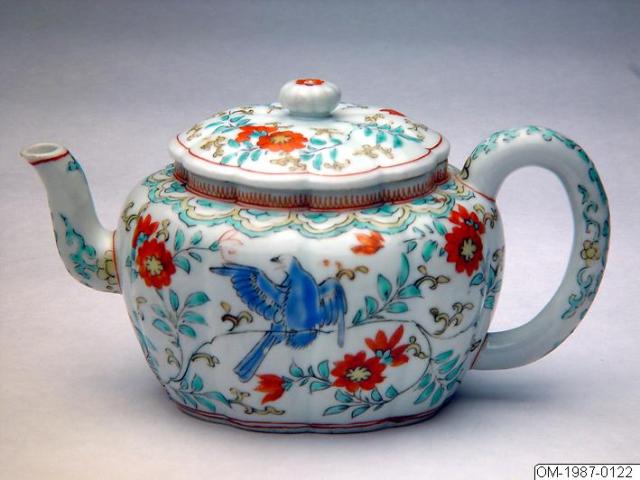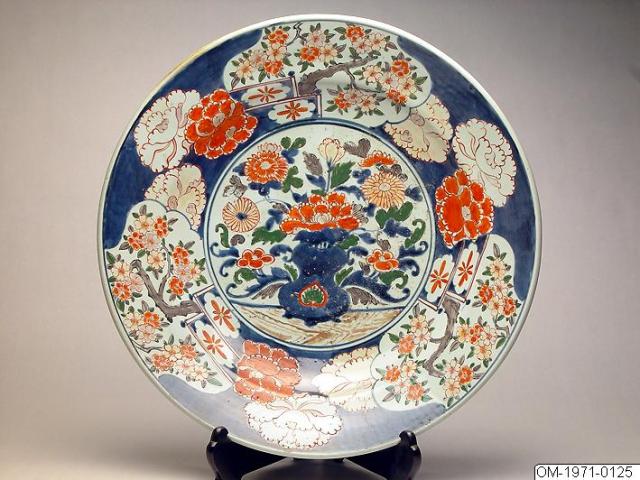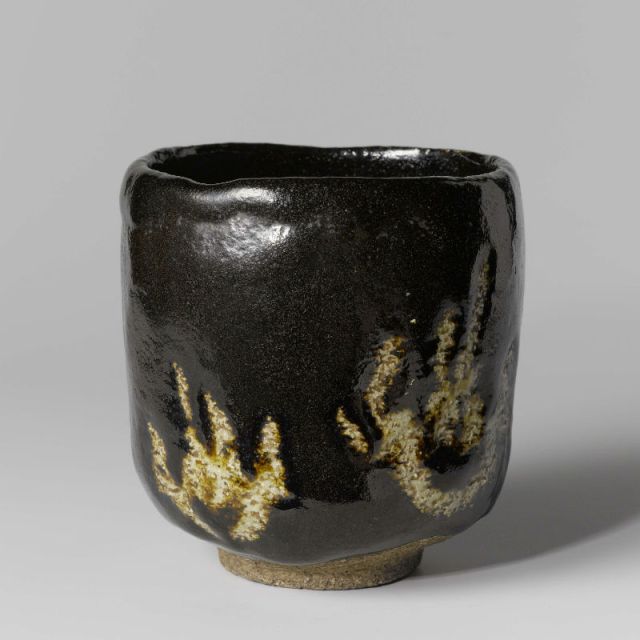Last week I started a blog series about how Japan has always fascinated the West and how this has led to extensive collections of Japanese art and crafts in European museums. I started off from TV-series Shōgun and ended with mentioning Japanese ceramics as among the type of artefacts I’d write more about. So let’s get started where we left off.
Japan is actually the country where pottery was first created! This the world’s first pottery tradition is called Jōmon and is more than 10 000 years old. However, these pots were never exported to the West I’ll start off instead with the kind that first was: Kakiemon porcelain.

Kakiemon style teapot. Courtesy of the Swedish Museum of Far Eastern Antiquites. Photograph is CC-BY-NC-ND
The Kakiemon style porcelain was created by Sakaida Kakiemon in the middle of the 17th century. During this period there was political unrest in China and so the Dutch East India Company turned instead to Japan and so Kakiemon became the first Japanese porcelain to be exported to Europe. Once arrived here it became so popular that European faience and later porcelain makers copied the style extensively. For this reason both real Kakiemon porcelain and Kakiemon styled European pottery are well represented in Europeana!
The Kakiemon style porcelains were produced in the city of Arita where also another popular style was produced, Imari. The Imari porcelain is very colourful and often combines blue, red and gold.
Europeana has a very extensive collection of Imari porcelain to explore!
The final style of Japanese pottery I’ll write about is also my favourite. Where Kakiemon and Imari are rich and colourful Raku ware is simple and spartan. If the glaze and the form hadn’t been just SO you would even think that Raku pieces are the work of failed apprentices!
As you can see from the small collection of Raku ware that we have in Europeana most pieces are teacups. The reason for this is that Raku is closely associated with the Japanese tea ceremony and its aesthetics.
I hope you enjoyed this quick introduction to Japanese pottery! Next week: clothing and clothing details.


